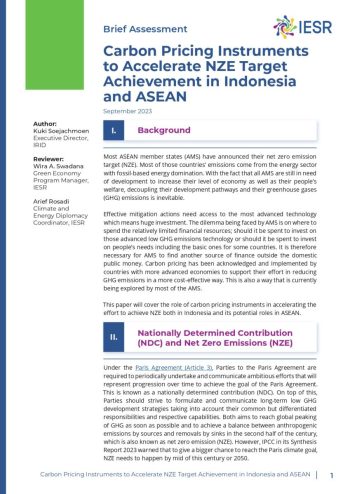Most ASEAN member states (AMS) have announced their net zero emission target (NZE). Most of those countries’ emissions come from the energy sector, with fossil-based energy dominating. With the fact that all AMS are still in need of development to increase their level of economy as well as their people’s
welfare, decoupling their development pathways from their greenhouse gas (GHG) emissions is inevitable.
Effective mitigation actions need access to the most advanced technology, which means a huge investment. The dilemma being faced by AMS is where to spend the relatively limited financial resources: should it be spent on those advanced low-GHG emissions technologies or should it be spent on people’s needs, including the basic ones for some countries? It is therefore necessary for AMS to find another source of finance outside of domestic public money. Carbon pricing has been acknowledged and implemented by countries with more advanced economies to support their efforts to reduce GHG emissions in a more cost-effective way. This is also a way that is currently being explored by most of the AMS.
This paper will cover the role of carbon pricing instruments in accelerating the effort to achieve NZE both in Indonesia and its potential roles in ASEAN.
Reviewer IESR :
- Wira A. Swadana, Manajer Program Ekonomi Hijau – IESR
- Arief Rosadi, Koordinator Diplomasi Iklim – IESR

